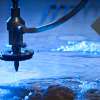24 April 2025
World Water Series – Recycling Wastewater – Sewage
Throughout history, humanity has grappled with the challenge of managing human, household, and industrial waste. As populations have expanded, so has the prevalence of disease and the strain on water resources. Poor wastewater management not only worsened these issues but also spurred innovative solutions to address the growing waste we generate.

In this blog, we will explore the often-overlooked world of sewage water and how advancements are reducing its impact on health, curbing pollution, and alleviating water scarcity.
From digging holes or pits, throwing waste out of windows or dumping it in rivers, to relying on modern water management facilities, humans have always had to find ways to deal with waste. Thankfully, the invention of the flushing toilet means most of us no longer need to worry about the effort required when nature calls. But have you ever wondered what happens to the water after you press the flush, rinse your dishes, take a shower, or wash your clothes?
Off It Goes - To Where?
Thanks to modern plumbing, wastewater is sent to local treatment plants, where it undergoes several crucial steps to ensure its processed effectively:
- Screening: Large items such as toilet paper and other debris, are removed during the initial screening process.
- Separation: The Wastewater is either spun or allowed to flow at a low speed, to help separate solid matter from the liquid.
- Sedimentation: The water slows down in a sedimentation tank or area, allowing heavier solids like sediment and sledge to settle. These solids can be disposed of or processed for purposes such as fertiliser.
- Nutrient Removal: Biological nutrients are removed by increasing the waters oxygen content and exposing it to sunlight and the elements. At this stage, the water becomes as clean as river water – safe for the environment but not yet drinkable.
Where Does Treated Water Go?
Wastewater treatment plants produce water that is not suitable for drinking but is often reused for other purposes, such as:
- Public Open Spaces: Irrigating sports fields, parks, non-edible plants, golf courses, and wetlands, or replenishing groundwater through underground pumps.
Industrial Uses: Cleaning equipment, washing streets, putting out fires, and cooling systems in manufacturing or data centres.
Making It Safe to Drink
Drinking water treatment plants take additional steps to ensure safety:
- Advanced Filtration/Disinfection: Processes like reverse osmosis, exposure to UV light or the addition of chlorine remove remaining contaminants. The treated water may then be stored in underground aquifers, lakes, or reservoirs for future use.
- Mineral Addition: Minerals are added to ensure the water meets standards for safe consumption.
Australia’s Use of Treated Wastewater
In Australia, approximately 19 percent of treated wastewater is used, mainly for non-drinking purposes. Since wastewater is about 99.9 percent water, it makes sense to recycle it. Strict regulations ensure that treated water is fit for its intended use.
Some treatment plants even make use of by-products like digestion waste. This sludge and sediment, left to break down in a process called anaerobic digestion, releases energy rich biogas. This gas is used to generate power, helping offset the plants energy demands.
Recycling wastewater is a complex but increasingly common process that addresses both environmental challenges and resource management. However, in many parts of the world, untreated sewage is still discharged into rivers, lakes, and oceans, causing severe pollution and health risks. Understanding how wastewater is treated and reused highlights the innovative ways societies are tackling these issues and the work still needed to manage this essential resource effectively.


